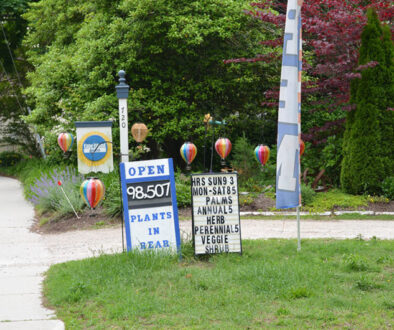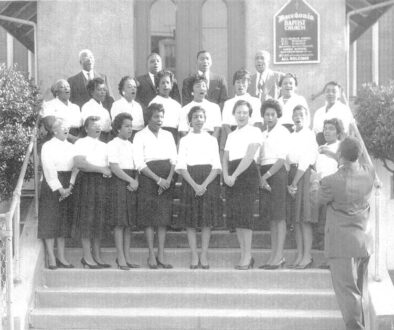The John Wanamaker House in Cape May Point Marks 150 Years

In addition to its share of exquisite Victorian period architecture in a seaside setting, Cape May Point, frequently referred to as simply “the Point,” is blessed with other alluring qualities. The dunes, the sound of waves where the Atlantic Ocean and Delaware Bay meet, and relative absence of traffic and commercial activity exude a tranquil atmosphere. When Cape May was already well developed, Cape May Point came into being as Sea Grove. The Sea Grove Association was founded in 1875 by Alexander Whilldin, a Philadelphia textile merchant with deep Cape May roots. To his good fortune, Whilldin married Margaret Crowley, a member of the Stites family that held the land that would become Cape May Point since 1712.
John Wanamaker, an innovative and acclaimed retailer of the famous department store and a Sea Grove co-founder, built his summer cottage in 1875, now home to the Marianist Brothers. Although both Whilldin and Wanamaker were Philadelphia businessmen and Presbyterians, they were well more than a generation apart. The ambitious younger Wanamaker was not yet 40 when he built his cottage. A decade later, he built a summer cottage in Cape May Point for President Benjamin Harrison. In turn, Harrison appointed Wanamaker as the U.S. Postmaster General in 1889 at the start of his one-term presidency. Wanamaker was a key financial backer of Harrison’s 1888 campaign. The Postmaster General 135 years ago was as powerful as the head of half of all of today’s social media giants. Telegraphs accounted for the other half.
Wanamaker selected a style for his “cottage” that was at its peak of popularity prior to and following the Civil War—the Italianate Bracketed Villa, a style Whilldin selected for his own cottage in the same year. Its character-defining features include, as the name would suggest, a substantial overhanging cornice with paired brackets, a central cupola, high ceilings, symmetrical placement of door and window openings, and a stately street presentation. Three stories in height, the Wanamaker House appears to be as wide as it is tall.




The Mainstay Inn (originally Jackson’s Clubhouse) on Columbia Avenue and the Southern Mansion on Washington Street, are two of the best-known examples of this style in Cape May proper. Unlike these examples, the Wanamaker House also has an upper second floor level to its wrap-around porch. While Stephen Decatur Button designed the Mainstay, and the Southern Mansion closely follows a design published by Samuel Sloan—two quintessential Philadelphia architects of the 19th century—there is somewhat of a mystery surrounding the Wanamaker House’s architect. Curiously, architect James Sidney is not mentioned in conjunction with the house’s design, despite being another co-founder of Sea Grove and fellow Philadelphian who designed the Point’s distinctive layout of a central circle with radiating streets.
Erosion, a never-ending battle with the sea, plagued many buildings at the Point from the start and the Wanamaker House was no exception. The Sea Grove House, which stood at the corner of Beach and Surf Avenues, was by far the Point’s first and most impressive hotel. Occupying a 5-acre site and able to accommodate 230 guests, it was razed in 1910 after damage inflicted by successive storms. Alexander Whilldin’s own house, strikingly similar in design to the Wanamaker’s house, stood at the corner of Beach Avenue on the opposite side of Surf Avenue, but was lost to a storm in 1936. Today, Surf Avenue is barely two houses deep (neither of which are historic) and dead ends where the dunes begin. Beach Avenue has been erased from the map by the waves without a trace. Despite the forces of nature, some buildings did survive the receding shoreline. Saint Peter’s by-the-Sea, first erected in 1880, has occupied its current site since 1908 but only after having been relocated an extraordinary five times to keep it out of harm’s way.


Wanamaker’s house, originally built at the corner of Beach and Emerald Avenues, also survived by being moved. During the time he owned the house, Wanamaker made numerous achievements in the realm of retailing and his business became Philadelphia’s first modern department store. He introduced electric lighting and pneumatic tubes to distribute cash and documents and acquired retail operations in New York City. After being Postmaster, Wanamaker sought—unsuccessfully—elected offices in Pennsylvania as U.S. Senator and then as governor. In his 60s by that point, Wanamaker seems to have focused primarily on business and donated the house to the Presbyterian Orphanage of Philadelphia in 1898 as a place of summer enjoyment. Around 1900, the house avoided the perils of the advancing sea by being moved back to its site. In 1916 it was relocated blocks away to its current location at the corner of Cape and Yale Avenues.
Except for a period of three years, the house has fulfilled the missions of religious organizations over the last 127 years, very much in keeping with Willdin’s desire to establish a “moral and religious seaside home.” After a brief period of private ownership, the Marianists Society, Inc., an organization of ordained and lay Roman Catholics dedicated to the Blessed Mother Mary, purchased the property in late 1962. At the time the Marianists acquired the property, Cape May County was recovering from the Nor’easter of that March which devastated the Mid-Atlantic region. The storm claimed the house’s central cupola and was never rebuilt. Now known as the Marianist Family Retreat Center, it is a place for religious and spiritual growth for individuals as well as families.


The Wanamaker House retains its historic features to a significant degree, including its two-story wrap-around porch, fenestration (arrangement of window and door openings), bracketed overhangs, and bracketed porch posts. The interior retains its graceful open stairway and plaster ceiling cornices as well as a significant amount of original woodworking. What changes have been made adapted it to its current use. According to Anthony Fucci, the Center’s director, the retrofiring of a sprinkler system made the building safer while allowing the center hall’s three-story stairwell to remain open, thus avoiding its enclosure. An elevator, also installed by the Marianists, provides barrier-free access to all floors. In short, the Marianists have been excellent keepers of an original house dating back to the community’s founding and a survivor of threatening storms. The Wanamaker House is key to Cape May Point’s history and a tribute to its stewards.



